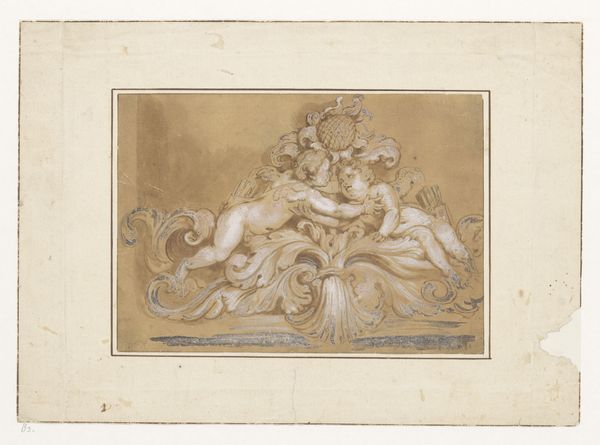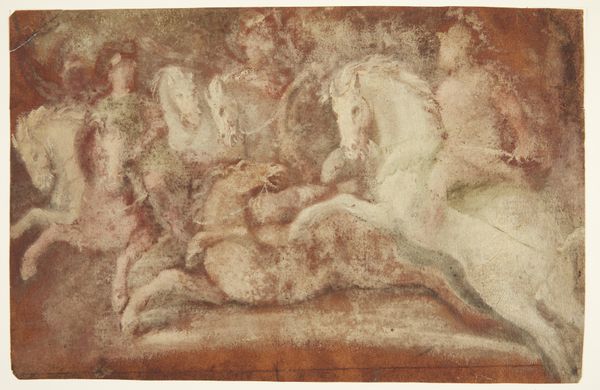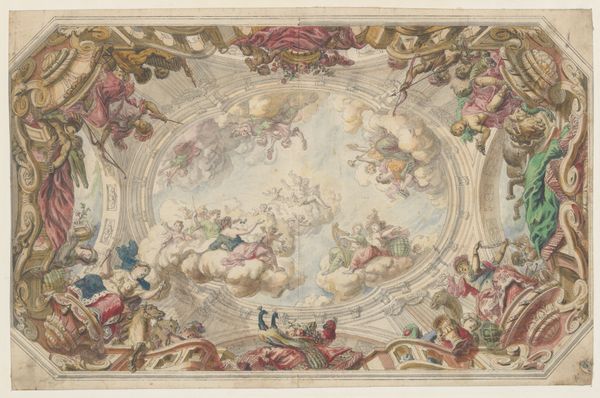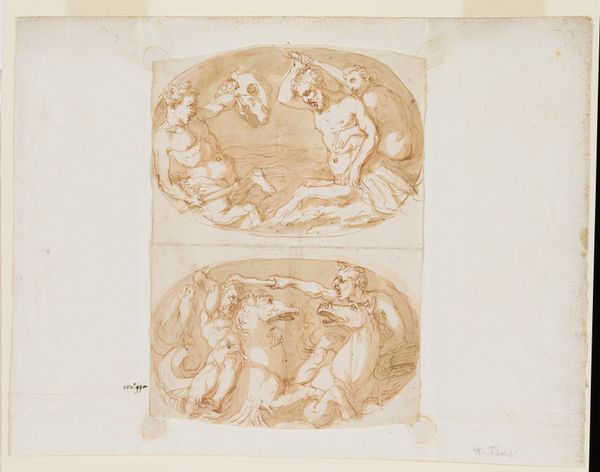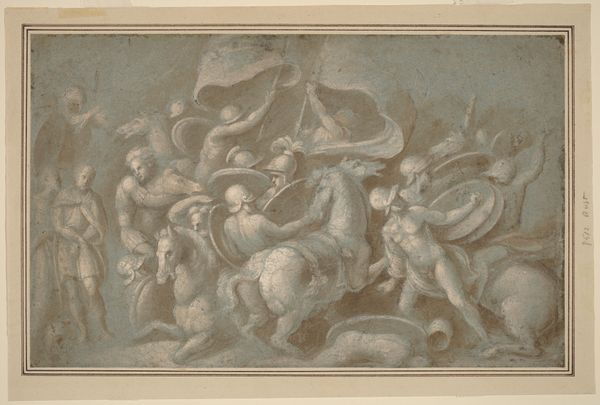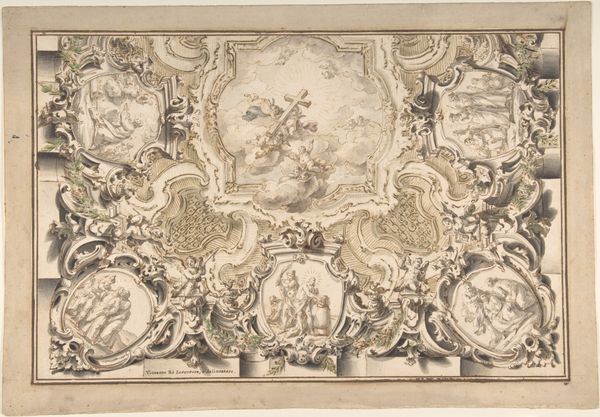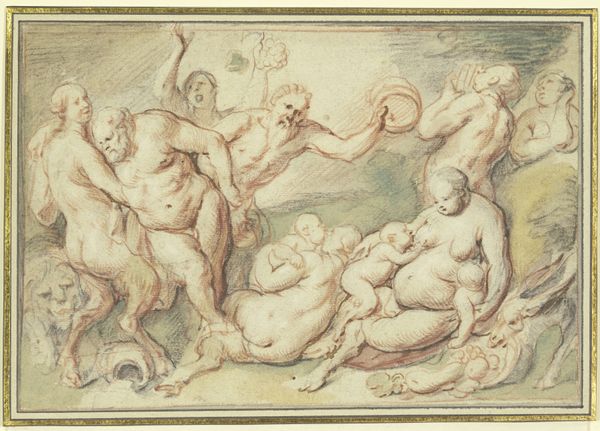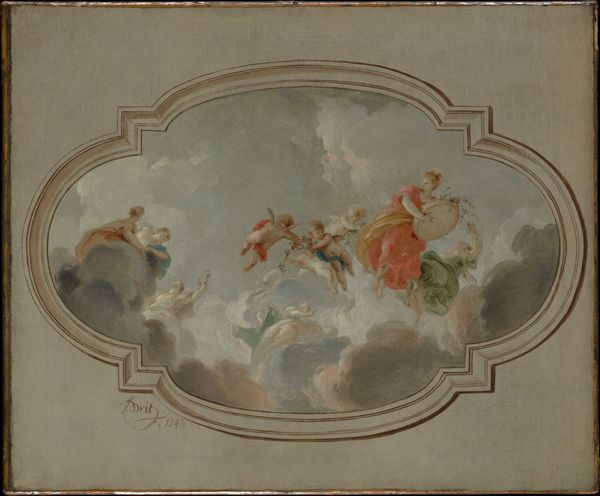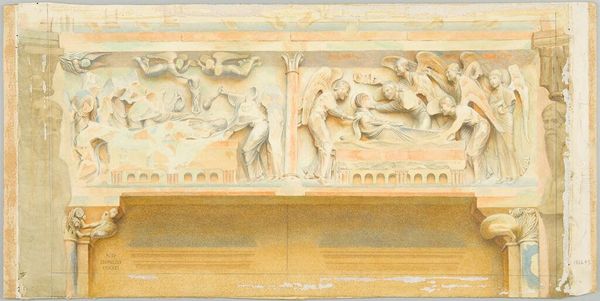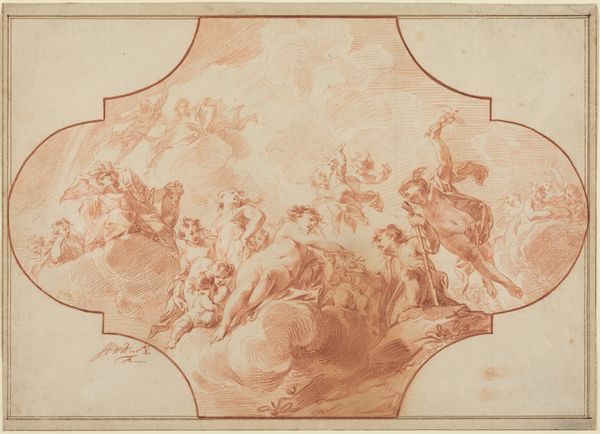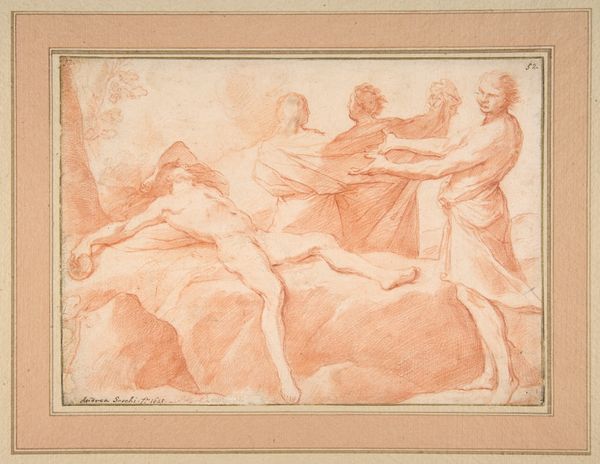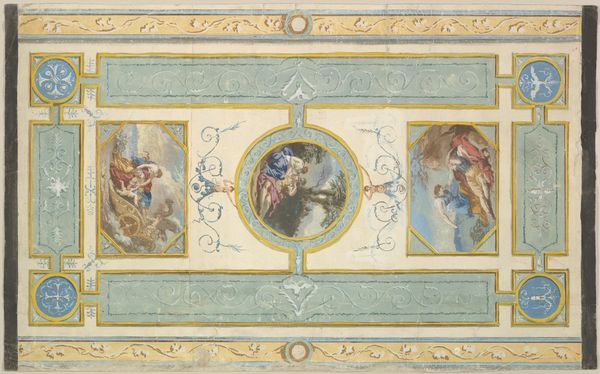
Dimensions: Overall: 14 9/16 x 18 3/4 in. (37 x 47.7 cm)
Copyright: Public Domain
Editor: This work, titled "Design with Putti," created sometime between 1850 and 1900 by Jules-Edmond-Charles Lachaise, uses watercolor, drawing and possibly other mediums. The scene of playful cherubs inside what appears to be a gilded frame feels ornate and decorative. What can you tell me about it? Curator: Well, the materials are quite interesting here. Note the artist’s choice of watercolour, often considered less 'serious' than oil. Using it alongside drawing techniques elevates the 'craft' element. Also, notice how the piece mimics the look of an oil painting while undercutting it with the medium and, arguably, the Rococo style which itself served aristocratic tastes and was about decorative spectacle. Considering the period, does this choice challenge established artistic hierarchies and consumer preferences, blurring lines between fine art and mere decorative arts? Editor: I see what you mean. The cherubs feel both classical and very much “design elements”. So this piece might have served as an actual design *for* something else? Curator: Exactly. Think about how such designs might have been commissioned and used in mass production of other objects - wallpaper, porcelain, even textiles. Were they simply decorations or were they actually small components within complex material chains, embedded in production and exchange systems? Does this allegorical motif take on new meanings when understood as a commodity in circulation? Editor: So, by examining the materials and intended purpose, we uncover commentary on art's place in a consumer culture? Curator: Precisely. It reminds us that art isn’t made in a vacuum; it is a product of labor, embedded in economic systems. Editor: That's fascinating! I never would have considered the implications of material choices this way. Thank you! Curator: My pleasure. It’s these connections between materials, labor, and context that can open up exciting perspectives on even the most seemingly straightforward artworks.
Comments
No comments
Be the first to comment and join the conversation on the ultimate creative platform.
